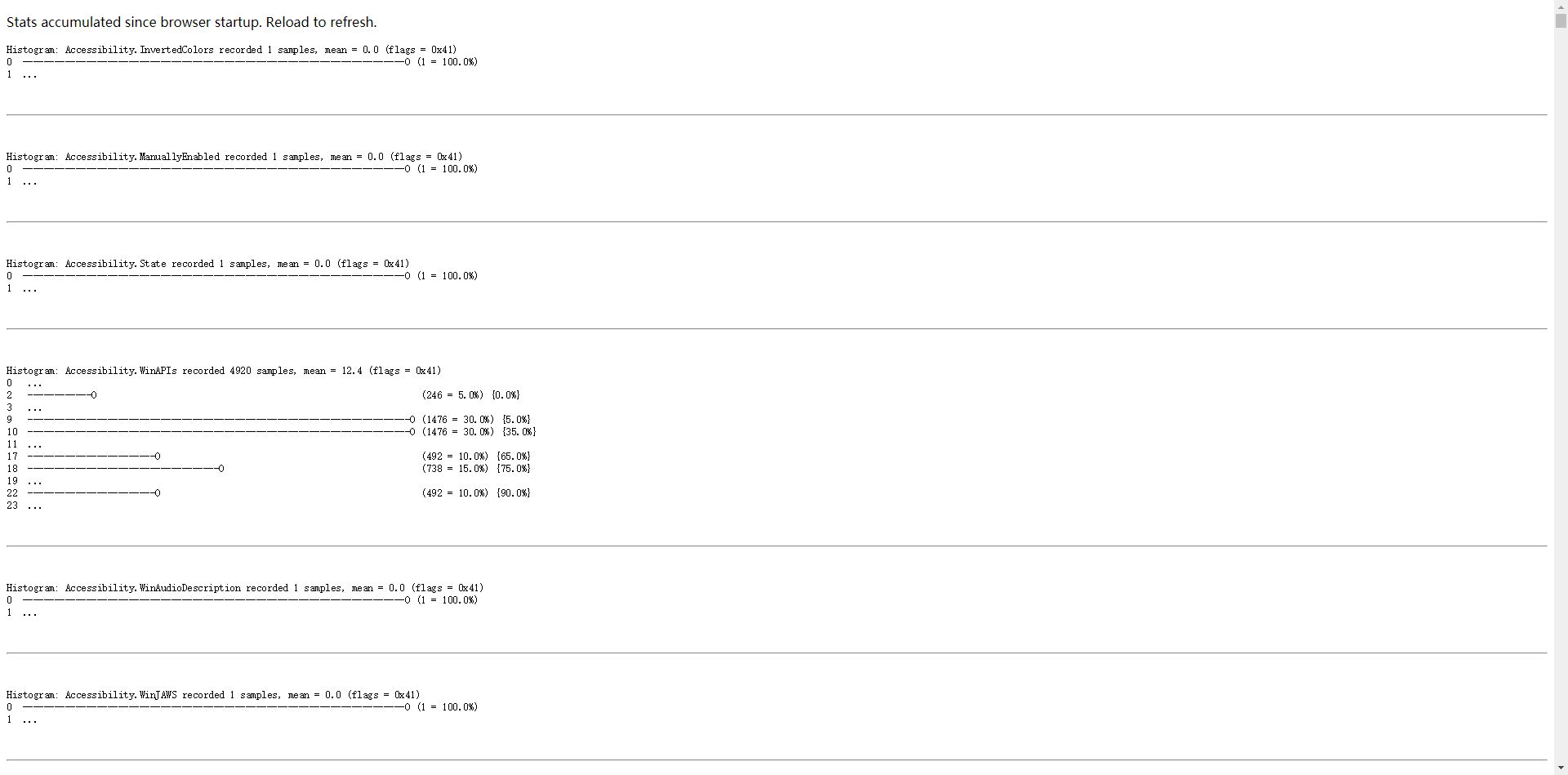chromium之histogram.h
histogram不知道是干啥的
// Histogram is an object that aggregates statistics, and can summarize them in // various forms, including ASCII graphical, HTML, and numerically (as a // vector of numbers corresponding to each of the aggregating buckets).
google翻译
//直方图是汇总统计信息的对象,可以将它们汇总 //各种形式,包括ASCII图形,HTML和数字(如 //每个聚合桶对应的数字向量)。
直方图——不就是统计用的,PPT还有饼图什么的
不管了,看看怎么实现的,就知道是干嘛用的了。
瞄一下,有没有引用不认识的头文件
histogram.cc
#include "base/histogram.h" #include <math.h> #include <string> #include "base/logging.h" #include "base/pickle.h" #include "base/string_util.h"
有一个!
#include "base/pickle.h"
参见分析chromium之pickle,我们知道该类提供基本的二进制打包、解包的功能。这样代码就能继续看下去了
这个pickle在头文件里有用到
bool Serialize(Pickle* pickle) const; bool Deserialize(void** iter, const Pickle& pickle);
序列化一般是进程间通讯传递数据用的
序列化在什么时候用:
当你想把的内存中的对象状态保存到一个文件中或者数据库中时候;
当你想用套接字在网络上传送对象的时候;
当你想通过RMI传输对象的时候;
一个类,有没有掌握——给你头文件,你会不会使用里面的函数——会了,这个类你就懂了。
class Pickle; class Histogram { public: //---------------------------------------------------------------------------- // Statistic values, developed over the life of the histogram. class SampleSet { public: explicit SampleSet(); // Adjust size of counts_ for use with given histogram. void Resize(const Histogram& histogram); void CheckSize(const Histogram& histogram) const; // Accessor for histogram to make routine additions. void Accumulate(Sample value, Count count, size_t index); // Accessor methods. Count counts(size_t i) const { return counts_[i]; } Count TotalCount() const; int64 sum() const { return sum_; } int64 square_sum() const { return square_sum_; } // Arithmetic manipulation of corresponding elements of the set. void Add(const SampleSet& other); void Subtract(const SampleSet& other); bool Serialize(Pickle* pickle) const; bool Deserialize(void** iter, const Pickle& pickle); protected: // Actual histogram data is stored in buckets, showing the count of values // that fit into each bucket. Counts counts_; // Save simple stats locally. Note that this MIGHT get done in base class // without shared memory at some point. int64 sum_; // sum of samples. int64 square_sum_; // sum of squares of samples. }; //---------------------------------------------------------------------------- Histogram(const char* name, Sample minimum, Sample maximum, size_t bucket_count); Histogram(const char* name, base::TimeDelta minimum, base::TimeDelta maximum, size_t bucket_count); virtual ~Histogram(); void Add(int value); // Accept a TimeDelta to increment. void AddTime(base::TimeDelta time) { Add(static_cast<int>(time.InMilliseconds())); } void AddSampleSet(const SampleSet& sample); // The following methods provide graphical histogram displays. void WriteHTMLGraph(std::string* output) const; void WriteAscii(bool graph_it, const std::string& newline, std::string* output) const; // Support generic flagging of Histograms. // 0x1 Currently used to mark this histogram to be recorded by UMA.. // 0x8000 means print ranges in hex. void SetFlags(int flags) { flags_ |= flags; } void ClearFlags(int flags) { flags_ &= ~flags; } int flags() const { return flags_; } virtual BucketLayout histogram_type() const { return EXPONENTIAL; } // Convenience methods for serializing/deserializing the histograms. // Histograms from Renderer process are serialized and sent to the browser. // Browser process reconstructs the histogram from the pickled version // accumulates the browser-side shadow copy of histograms (that mirror // histograms created in the renderer). // Serialize the given snapshot of a Histogram into a String. Uses // Pickle class to flatten the object. static std::string SerializeHistogramInfo(const Histogram& histogram, const SampleSet& snapshot); // The following method accepts a list of pickled histograms and // builds a histogram and updates shadow copy of histogram data in the // browser process. static bool DeserializeHistogramInfo(const std::string& histogram_info); //---------------------------------------------------------------------------- // Accessors for serialization and testing. //---------------------------------------------------------------------------- const std::string histogram_name() const { return histogram_name_; } Sample declared_min() const { return declared_min_; } Sample declared_max() const { return declared_max_; } virtual Sample ranges(size_t i) const { return ranges_[i];} virtual size_t bucket_count() const { return bucket_count_; } // Snapshot the current complete set of sample data. // Override with atomic/locked snapshot if needed. virtual void SnapshotSample(SampleSet* sample) const; // ... }
看一下测试用例
// Check for basic syntax and use. TEST(HistogramTest, StartupShutdownTest) { // Try basic construction Histogram histogram("TestHistogram", 1, 1000, 10); Histogram histogram1("Test1Histogram", 1, 1000, 10); LinearHistogram linear_histogram("TestLinearHistogram", 1, 1000, 10); LinearHistogram linear_histogram1("Test1LinearHistogram", 1, 1000, 10); // Use standard macros (but with fixed samples) HISTOGRAM_TIMES("Test2Histogram", TimeDelta::FromDays(1)); HISTOGRAM_COUNTS("Test3Histogram", 30); DHISTOGRAM_TIMES("Test4Histogram", TimeDelta::FromDays(1)); DHISTOGRAM_COUNTS("Test5Histogram", 30); ASSET_HISTOGRAM_COUNTS("Test6Histogram", 129); // Try to construct samples. Histogram::SampleSet sample1; Histogram::SampleSet sample2; // Use copy constructor of SampleSet sample1 = sample2; Histogram::SampleSet sample3(sample1); // Finally test a statistics recorder, without really using it. StatisticsRecorder recorder; }
看一下效果,浏览器地址栏输入:chrome://histograms/






